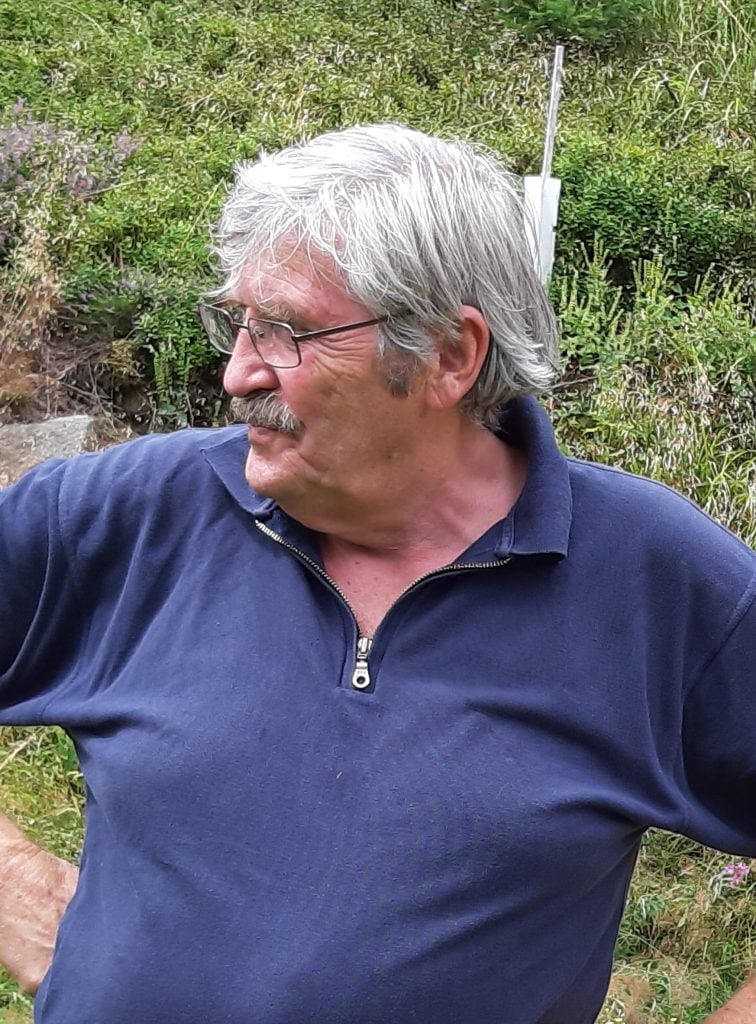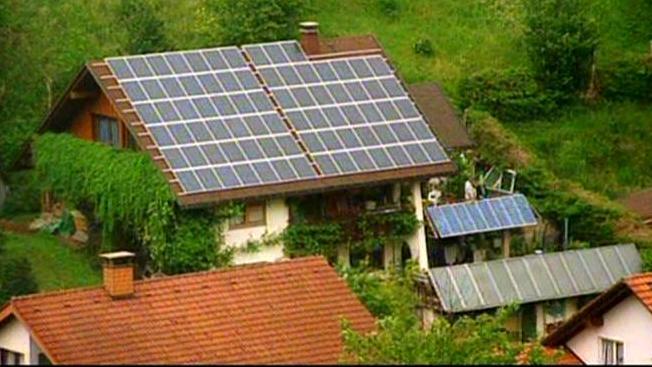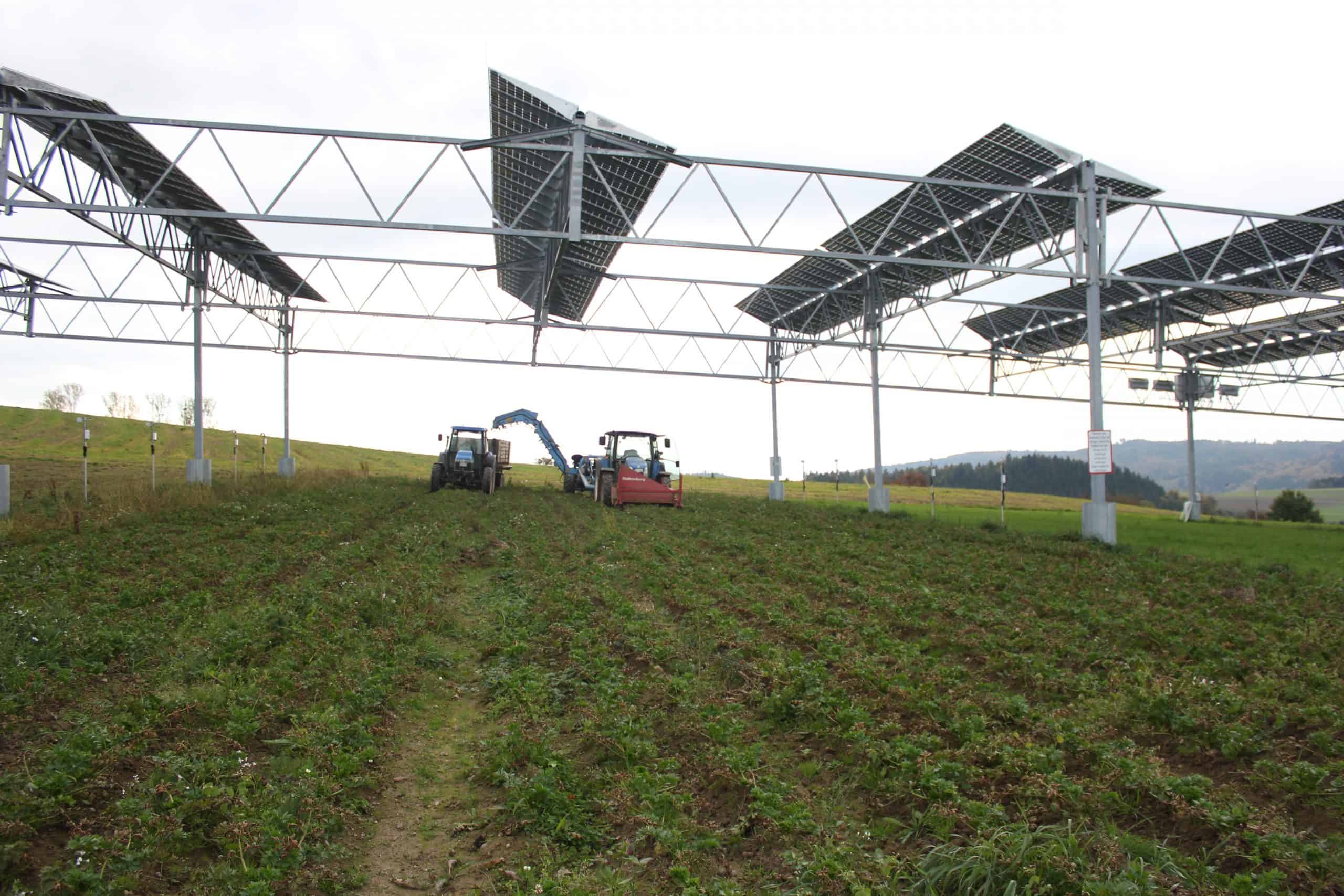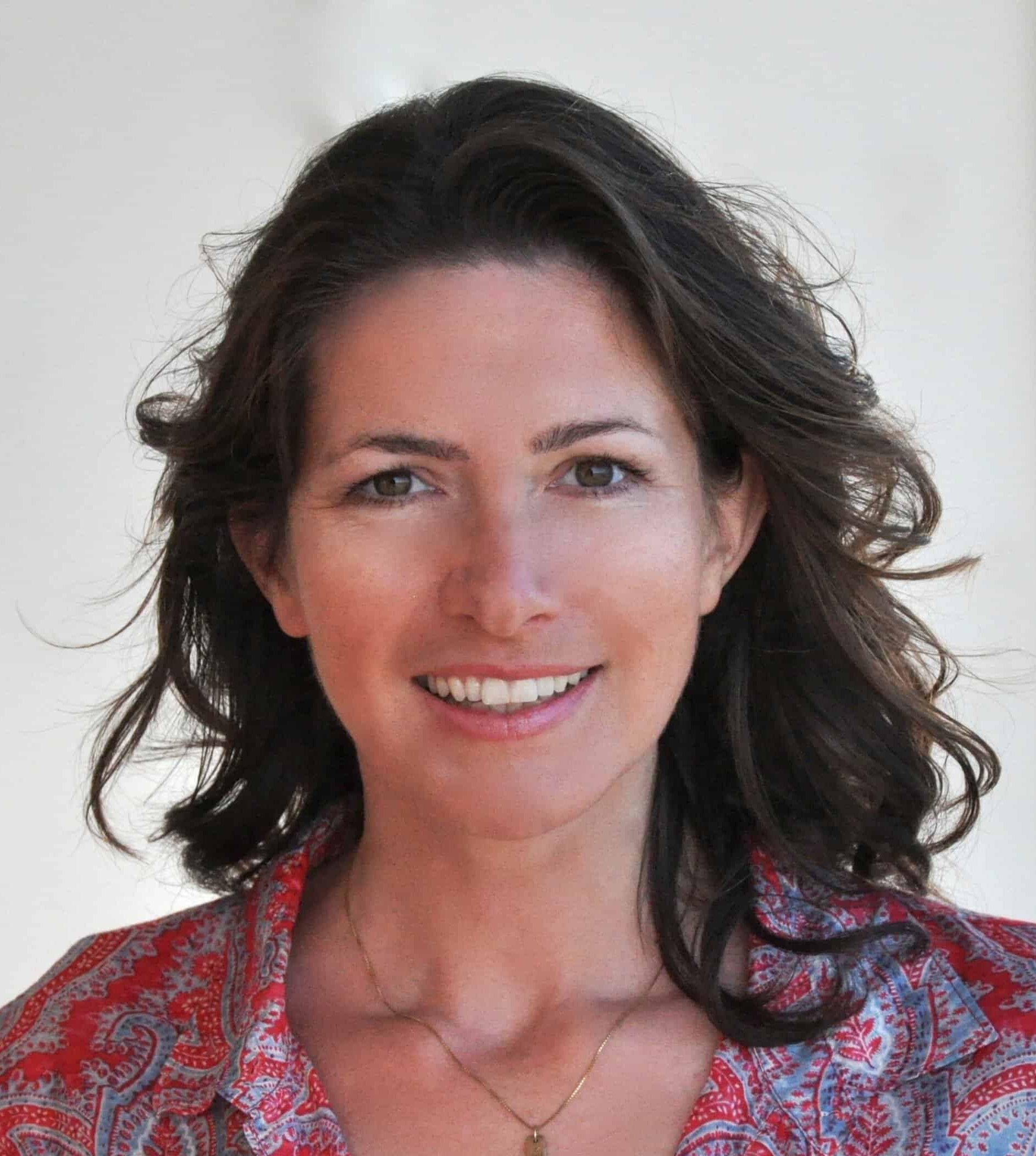Walter Falger is a rebel with a cause. A soft-spoken retired policeman with a passion for beekeeping, he might not look the part in his black reading glasses and gray polo shirt. But along with a small army of like-minded neighbors in the Black Forest region of Germany, he considers himself an “energy rebel” as an early adopter in what he calls “the revolution of energy sharing.”
The seeds of this revolution are a community experiment in Schönau, where Falger and 24 others founded the Virtual Citizen Power Plant as a model project in 2017. The group — among them, local farmers, stay-at-home moms, IT experts and artists — share the energy they need for their homes and offices.
“We deliberately accepted applications from a very diverse range of people,” project manager Frederik Penski says. “Oldtimers and newbies, seniors and young couples, from very tech-savvy to tech-illiterate.” The only thing they all have in common is the willingness to invest their time and efforts in this new model to achieve energy sovereignty.

Every household in the group contributes the renewable energy it collects — for instance, through solar panels or thermal power stations — to the virtual power plant. At any given time, every group member can see how much energy is available in this virtual plant, as well as how much they are producing and using, individually and collectively. They can then adjust their own energy consumption accordingly, first using as much green energy as they’re producing themselves; then, as much as has been made available by the other members; and finally, selling any left over back to the grid. If every member of the group chooses to do this, they are effectively drawing no electricity from the grid.
For now, the group is regional — the closest member lives just a few houses down from Falger — but there’s no reason the model couldn’t extend to anybody who wants to participate. A Hamburg homeowner could “share” the surplus energy from her rooftop solar panels with a farmer in Bavaria whose electric tractor needs a charge.
“Think of it like you’re throwing a cable over to your neighbor and saying, hey, my solar panels produce enough energy for both of us, but virtually,” explains Penski.
Turning consumers into ‘prosumers’
The movement to become energy independent has gained new urgency in the wake of Russia’s invasion of Ukraine. It’s also key to achieving Germany’s climate action commitments. To meet the emission reductions of the Paris Agreement, Germany must produce at least 80 percent of its energy from renewable sources by 2030 — hardly achievable without a big push from regular citizens.
According to the German Agency for Renewable Energy, nearly half of wind, solar and biomass energy comes from private households and farmers. (More than 20 million German homes already have solar panels on their roofs.) But to reach 80 percent renewables, Germany needs all suitable surfaces to be generating renewable energy. Experts estimate that German citizens, as individuals, could collectively invest up to 12 billion euros in solar panels, geothermal heat pumps and other green energy generators, thus supporting the switch to climate-friendly energy on an enormous scale by actively participating in the market for green energy instead of just consuming it.

Falger calls these people “prosumers,” because they not only consume energy, but produce, store and trade it, too. This energy sharing model is supported by a 2019 EU decision that officially grants EU citizens the right to share energy with each other. And while such energy sharing efforts are now underway in communities across Europe, Schönau’s Virtual Citizen Power Plant is distinguished by its digital decentralization and smart technology.
Crucial to the new model is the app EWS developed. When Falger opens the app on his phone, he can see with a glance how much energy he is producing and using. The bright sun on top of his screen signals that on this sunny summer morning, he is producing 425 watts and using only 24. He also sees that none of the members in his energy sharing group currently use much energy, so most of the charge is automatically fed into the grid. “We do adapt our daily usage, like we run the washer when the sun shines.” Last year, he produced nearly 14,000 kW hours of which he used 3,900, and he sold the rest for 48 to 57 cents per kW. In addition, he installed a wood-burning stove for the winters when the panels don’t get much sun. “We’re near the woods,” he says in his local dialect. “You can always go into the forest with an axe.”
He appreciates that this model allows him to be nearly independent of the energy market. Even in winter when snow covers his panels, other members of the group might still have energy to provide. And he loves the voluntary group meetings where members exchange best practices and tips.
Twenty years ago, motivated then by “the Saudis who blackmailed us with their rising oil prices,” he was one of the first homeowners in Germany to install solar panels on his roof. “A lot of people laughed at me back then,” he says. He carried the financial risk (80,000 euros) alone, and though the solar panels produce more energy than his modest home needs, he has not made big profits — but he also did not lose money over the years.
“It’s like a mom-and-pop shop, but for energy”
Falger happens to live near a community of pioneers who prioritize the environment over money. In the wake of the Chernobyl nuclear disaster in 1986, a local couple, Ursula and Michael Sladek, wanted to force their local energy provider to switch from nuclear to renewable energy. They organized local referendums, went to court and collected about $4 million to take over the energy provider, which became “Elektrizitätswerke Schönau” (Power Company Schönau, or EWS) in 1994, and transformed into Germany’s first energy co-op in 2009.

Falger became a member early on. The trailblazing initiative won numerous awards. Not only did they switch to 100 percent renewable energy (even the local church now has solar panels on its roof), they also pioneered the community approach that recently became EU policy.
Over the years, the nonprofit EWS has bought other energy suppliers, local grids and outfits; grown from five employees to 150; and now provides certified renewable energy nationwide to 217,000 clients. Her much-lauded initiative earned Ursula Sladek a visit with then-president Barack Obama in 2013. And eventually, due to the rise of the Green Party in the German government, the political will emerged to break up the conventional power supply market, which had been in the hands of a few big companies, not least because the EWS had proven that a citizen-led model was possible.
It is based on this background that Penski, a full-time EWS employee, organizes the new group of energy sharing rebels, following the revisions to German and EU energy laws. “Many might ask, why does an energy provider invest in such an energy sharing model? Doesn’t this make you superfluous?” Penski gives the answer himself: “We believe citizens taking responsibility for their own energy supply is the future. In a way, we’re shifting the model from a central energy supplier to regional and digital groups.” The EWS has made its mark “in a bureaucratic world that is not really made for such user initiatives,” he says. “The complexity of the rules and regulations is enormous. Realistically, users cannot manage this on their own.” Therefore, EWS shoulders most of the technological and bureaucratic burden.
Weighed down by negative news?
Our smart, bright, weekly newsletter is the uplift you’ve been looking for.For individual homeowners, installing solar panels on their own dime is often prohibitively expensive and fraught with bureaucratic hurdles that keep changing. Not all rooftops are suitable; Falger is lucky that his roof faces almost straight south. But because of tax regulations for energy sales, he had to found a company in order to be allowed to sell the energy his panels produce, and not everybody can mount such an effort.
Reducing this burden is why a growing number of communities and cities are looking for models that allow them to band together and collectively finance renewable energy projects in their area. Doing so means that a community can decide, for instance, to install wind turbines on local land or cover a parking lot with solar panels. “It’s like a mom-and-pop shop in the village, but for energy,” one of the participants explains.
There are other advantages. For instance, German energy laws wouldn’t allow Walter Falger to sell the energy he produces from solar panels that are more than 20 years old, but the Virtual Citizen Power Plant makes this possible. The EWS also replaced Falger’s 40-year-old electric meter with a high-tech smart meter, and installed an efficient ion battery at a cost of nearly 10,000 euros, allowing him to store the energy he produces for when he needs it.
“To participate in the nation’s energy supply, you need a secure infrastructure,” Penski explains. He calls the citizen plant a “real-life lab” to gain experience for the future. “We shift the perspective from the single household to the community.”
Like Falger, Penski is motivated by deep conviction. He got his first small solar panel as an eight year old. Later the engineer studied at the Cologne Institute for Renewable Energy before moving to Schönau to lead this experiment. His vision goes beyond improving energy management, “but the next step is not only to monitor, but to direct the supply for maximum optimization,” he says. “For instance, EVs could feed their electricity into the grid. Users could tell the app how many miles they need to drive and the technology would ensure they have the necessary charge. Or the system could recognize: hang on, energy will be scarce the next 15 minutes, let me power down some non-essential things.”
The focus of such experiments is not on solar energy alone. Each community can find the mix that suits its lifestyle and geographic location the best. In the Austrian village of Tattendorf, for instance, 60 community members (which includes the regional administration) decided collectively to invest in several renewable energy sources. Most public buildings, from the administration to the kindergarten, now sport solar panels. So do some unused parking spaces. In the east of the village, several wind turbines catch the breeze, and the local stream, the Triesting, produces hydropower. Thus Tattendorf became one of the first Renewable Energy Co-ops (Erneuerbare Energie Gemeinschaft, or EEG) in Austria, essentially an energy “island” operating its own system.
A community can be certified as a “bioenergy village” when at least 50 percent of its energy and heating needs are covered by renewable energy. Bioenergy villages not only produce renewable energy, but also focus on utilizing the energy as efficiently as possible. The participation of residents is crucial, as most energy communities are run as co-ops, meaning the residents buy into the solutions and, at least partly, own the equipment as a collective.
The first pilot village that focused on heat was Jühnde, a village with 800 inhabitants in Lower Saxony, Germany. In 2005, after seven years of planning, the villagers invested in an experimental bioenergy project. Together, they researched, designed and bought a $5.2 million biogas plant and wood chip furnace that provides energy and heat for the entire village. The business model required a relatively small amount of seed money but reaps long-term ecological benefits.
About 200 other communities have since followed, mostly in Germany. (Germany alone has 171 certified bioenergy villages, and 50 more are on their way to being certified.) But there are also international experiments, for example, in Karditsa, Greece; Brixton, UK; Jurascic, France; and Portugal. And it’s no longer just villages. Cities with 120,000 residents like Göttingen have formed EEGs, and even in Berlin, with more than six million residents, 500 citizens have formed a coalition called “CitizenEnergy” that wants to take over the city’s grid. Apartment owners could follow suit. For instance, the owners of 20 units in an apartment building could collectively agree to invest in solar panels on the roof.
In the US, too, Indigenous communities are moving toward energy sovereignty, for instance, in Hawaii, New Mexico and Humboldt, California. But each US state has its own regulations. Some allow residents to feed electricity back to the grid, some don’t.
Scientific studies of pioneering villages such as Jühnde provide evidence that this solution has resulted in a 60 percent reduction of CO2 emissions, creates price stability, and enables farmers and homeowners to be energy independent. The study also revealed that nearly all villagers experienced a greater sense of community, and lifestyles in the village have been changing as a result of collaborative planning and peer pressure.
Professor Claudia Kemfert, an energy expert at the German Institute for Economic Research in Berlin, believes “energy sharing can contribute to citizens actively participating in the energy transition. The communities will profit immediately when they use renewable energy, and energy sharing will lower energy costs by creating more competition and increasing the share of renewables.” Some 90 percent of households participating in Energy Sharing could benefit from significantly lower energy prices, the Berlin Institute for Ecological Economic Research projected in a study.
What is missing in most countries, including Germany, are clear guidelines. German politicians are still debating how to implement the new EU guidelines, who can form energy sharing communities, which rights they should have, if and how to subsidize them, and how to prevent abuse. It will be especially important to define how big the networks can be, and who is responsible if networks fail.
Meanwhile on the ground, citizens have to figure out how they can make these projects economically viable. As with any business, becoming an energy producer is not without risk. Right now, eco-conscious people like Walter Falger invest their time and money, and EWS is shouldering a lot of the complicated footwork and providing state-of-the-art technology. But eventually these models need to make sense financially for a broader public.
Currently, few energy co-ops are truly profitable. Most are barely scraping by due to high administrative costs, ever-changing bureaucratic rules and fluctuating energy prices. Unexpected repairs or a rainy summer can throw off even prudent calculations.
Jühnde, for instance, widely lauded as Germany’s first bioenergy village, had to sell its project to a private investor in 2019 after quarrels within the community. Now the village still gets renewable energy, but the residents don’t own the equipment anymore.
But for every failed initiative, there is at least one success story. The parent company of the Schönau energy rebels now runs a profitable nationwide company. Its 7,300 co-op members earn three percent interest every year. The EWS is so successful it could dole out even more than that, but true to its roots, its founders adhere to a self-prescribed “anti-greed threshold;” the rest of the profit is reinvested into environmental projects such as the Virtual Citizen Power Plant.
What started as a grassroots experiment 40 years ago is why Schönau is now unofficially known as Germany’s solar capital, with the densest concentration of solar power in the country. As founder Ursula Sladek said at the beginning of her journey, “If the government isn’t doing it, citizens just have to take action themselves.”










